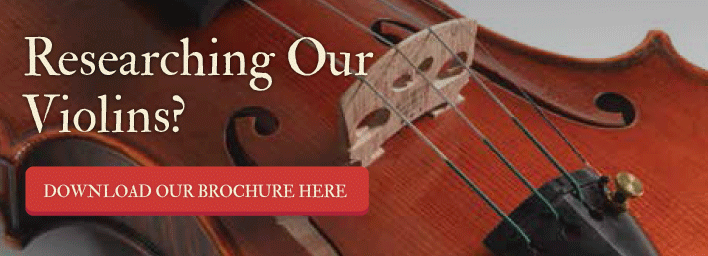How To Help Your Violin Students With Intonation Issues

Proper intonation on violin is a skill set that requires constant practice and vigilance. For beginning violinists, hitting their stride can be difficult at first. Not only does intonation require violin skills, it also requires training your aural skills to recognize when you are just slightly off. As an educator, it can be even harder to teach these skills to students who seem to be struggling. That's why we've collected some helpful tips from music experts around the world.
Practice Listening First
The first thing to remember is that your students do not have a natural ability to hear what's "right". You may have spent years developing this skill, but they are at the beginning of their journey. While some students are truly tone-deaf and unable to hear the difference, most students simply don't know what they're supposed to be listening for. Start by playing sets of notes. Play the note you want to learn first, and then play either the same note or a slightly flat/sharp version of the note and ask your students if they can hear the difference. If they can hear the difference, ask them to identify whether it is sharp or flat so that they can start placing those sounds on a mental scale. The first time you play this game you may need to exaggerate the sharps and flats until they understand the concept, and then you can work down to subtler differences.
Play Along with a Piano or Recording
If you have the opportunity to do one-on-one practice, allowing your student to play along with you on piano gives them a chance to notice when their notes depart from the true note. Whenever this happens you can replay the note until they find it. This is the first step in helping them apply their aural training to their actual fingering technique. Plan on slowing the song down to 1/2 or 3/4 speed to ensure that the notes are clear and concise and your student has enough time to really listen to each one for clarity.
Teach them to Practice Independently and With Their Eyes Closed
In a group setting, there are many visual cues that can help your little violinists slide by without ever learning intonation on their own. Unlike a fretted instrument, your students must rely on touch and their own hearing to tell the truth. While colored dots on the fingerboard may help learn note identification and finger placement during the first few months, you should avoid keeping them in place for too long. Encourage your students to gently close their eyes once they have learned the notes of a song, and practice recreating it by feel and hearing instead. Make sure they are doing this at home as well so they can hear themselves, not just the crowd. In fact, many instructors recommend spending at least 50% of your time on playing by ear rather than learning notations. The theory is that until students can hear and identify notes, the notation symbols aren't tied to a solid foundation.
Sing, Sing, Sing!
One element of learning intonation that often goes underappreciated is a fundamental need for students to embrace sounds with their whole body. We often teach students to count rhythm by clapping, stomping or hopping, but the same method can be applied to intonation! Having your students sing the notes, hum them, and practice them in solfege will firmly plant the notes in their mind. Then have them sing out loud as they play, and see if they can match their playing to their own voice. Of course, you have to be vigilant to ensure that they are singing on-key throughout this process.
These are just four of the most popular methods for teaching new violin students how to master intonation. Intonation is a skill that should be developed early on in your students' musical careers because it is much harder to learn as they get older. For more advanced information on intonation and harmonics, check out this blog!
This blog was sponsored by Thomastik-Infeld.


